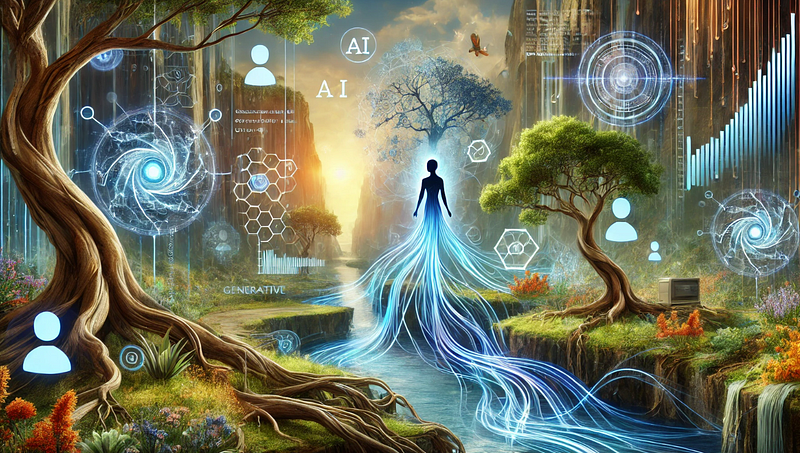“The only way to discover the limits of the possible is to go beyond them into the impossible.” — Arthur C. Clarke.

Generative AI (gen AI) has amazed the world with its ability to extract insights and create content across text, audio, images, and video. Foundation models, like large language models (LLMs), have been at the forefront of this revolution. But the next phase promises to be even more transformative.
https://thejourneyisdigital.medium.com/from-kasparov-to-chatgpt-32f32df73312
We’re shifting from knowledge-based gen-AI tools, like chatbots that answer questions, to gen AI-powered agents capable of executing complex, multistep tasks in the digital world. In essence, technology evolves from thought to action.
Broadly speaking, “agentic” systems refer to digital systems that can independently interact in a dynamic world.
While similar software systems have existed for years, the natural-language capabilities of generative AI (gen AI) unlock new possibilities. These systems can now plan actions, use online tools to complete tasks, collaborate with others, and learn from their experiences. Gen AI agents could soon become skilled virtual coworkers, working seamlessly alongside humans.
For instance, a virtual assistant might plan and book a personalized travel itinerary, managing logistics across various platforms. An engineer could describe a new software feature in plain language, and a programmer agent would then code, test, and deploy the tool.

The Value of Agents
Gen AI-enabled agents have the potential to revolutionize business automation by tackling complex use cases with highly variable inputs and outputs—scenarios that have traditionally been too complicated, costly, or time-consuming to automate effectively.
Take a business trip, for example. Planning involves coordinating flights, hotels, restaurants, and activities across multiple platforms, each with numerous options. While parts of this process have been automated, much still requires manual effort due to the variability involved. Gen AI agents can simplify this by automating complex, open-ended tasks in three key ways:
- Handling Complexity: Unlike rule-based systems that break down unpredictably, Gen AI agents can adapt quickly to unexpected situations and varied outcomes, ensuring processes are completed efficiently.
- Natural Language Instructions: Traditional automation requires breaking down tasks into codified rules, which is time-consuming and requires technical expertise. Gen AI agents, however, can be directed using natural language, allowing even nontechnical employees to encode complex workflows quickly and easily.
- Integration with Existing Tools: Agents can interact with various digital tools and platforms, using their gen AI capabilities to analyze data, search for information, and execute tasks across systems. This reduces the need for extensive manual integration or data collation efforts.
Are You Prepared?
As agent technology evolves, business leaders must prepare for its potential impact. Investing in learning about these systems now can help organizations identify opportunities where agentic systems could accelerate core processes and stay at the forefront of innovation.
To get ready for the age of agents, consider these three key factors:
- Codification of Knowledge: Organizations should document and codify business processes into workflows that can train agents. Capturing subject matter expertise in natural language will also be crucial for streamlining complex tasks.
- Strategic Tech Planning: Ensure your data and IT infrastructure are ready for agent integration. This includes organizing systems for practical interfacing, capturing user feedback, and maintaining flexibility for future technological advancements.
- Human-in-the-Loop Control: Human oversight is vital to balance autonomy with risk as agents interact with the real world. Implement control mechanisms to validate outputs for accuracy, compliance, and fairness, and work with experts to maintain and scale agent systems.
Conclusion
The evolution of technology, particularly with generative AI, is moving from simple information processing to enabling action through “agentic” systems.
To prepare for this shift, businesses should focus on codifying knowledge, planning for tech integration, and ensuring human oversight to maintain control and accuracy. Embracing these steps will help organizations stay competitive in the rapidly evolving landscape of AI-driven automation.
Your feedback is essential to me. If you enjoyed the reading,
please help me with a couple of claps or leave a comment. Thank you.

Stay Ahead Of The Curve
Subscribe for the Latest Insights on Leadership and Digital Transformation

Disclaimer: This post was created with the help of AI tools to improve efficiency, required hours of dedicated writing, and contains my experience in the field.





